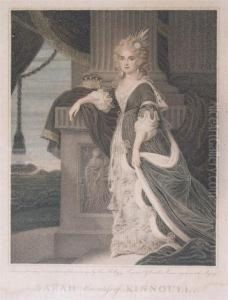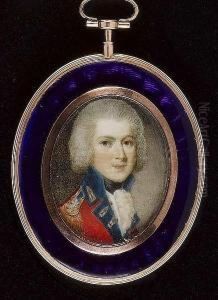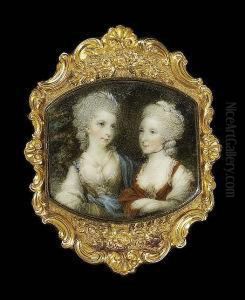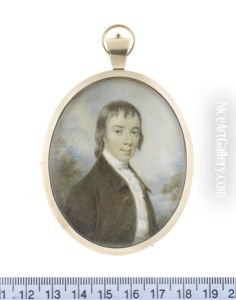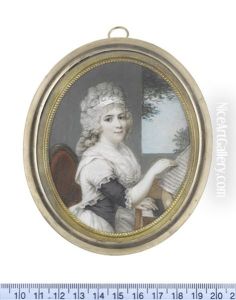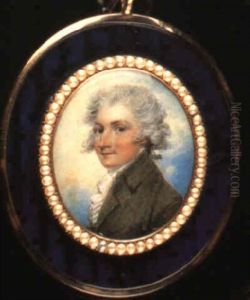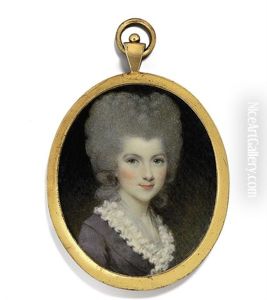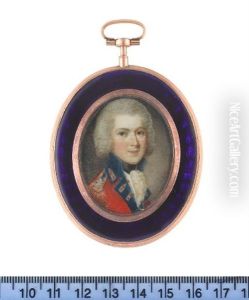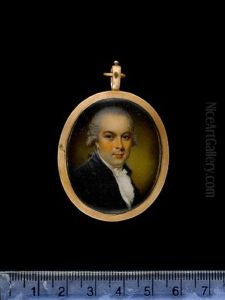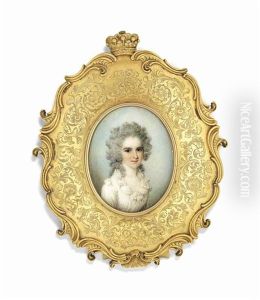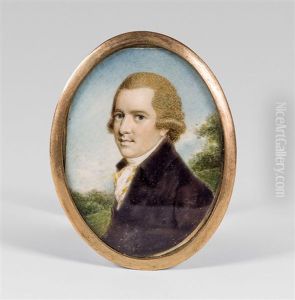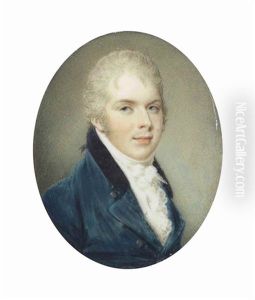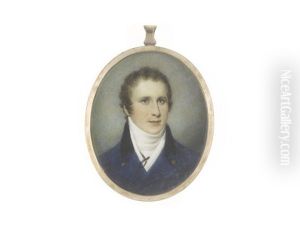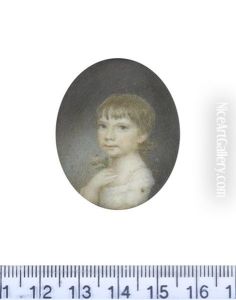Samuel Shelley Paintings
Samuel Shelley was a British miniaturist and watercolour painter, known for his portraits and literary subjects. Born in Whitechapel, London, in 1750, Shelley developed an early interest in the arts. He initially trained under a silversmith, which honed his meticulous attention to detail, a skill that would later characterize his miniature paintings. Shelley's artistic career took a significant turn when he decided to focus on painting, particularly in the medium of watercolors and on a miniature scale. His work quickly garnered attention for its delicacy and precision.
Shelley's contributions to the arts were most prominent in the late 18th century, a period during which the demand for miniature portraits was on the rise among the British gentry and aristocracy. His ability to capture the likeness and personality of his sitters in such a small format earned him a distinguished reputation. Shelley was not just a portraitist; he also explored literary themes, drawing inspiration from Shakespearean characters and scenes, which he depicted with a romantic sensibility.
In 1791, Shelley became a founding member of the Royal Academy of Arts, an institution that played a crucial role in the development and promotion of the arts in Britain. This affiliation helped elevate his status and influence in the art world. Throughout his career, Shelley exhibited numerous works at the Academy, contributing to the growing appreciation of miniature painting as a respected art form.
Despite his success, little is known about Shelley's personal life, and he remained a somewhat enigmatic figure. He passed away in London in 1808, leaving behind a legacy of work that continues to be studied and admired for its beauty and technical skill. Samuel Shelley's miniatures are considered significant in the history of British art, exemplifying the elegance and refined aesthetic of the late 18th century.



